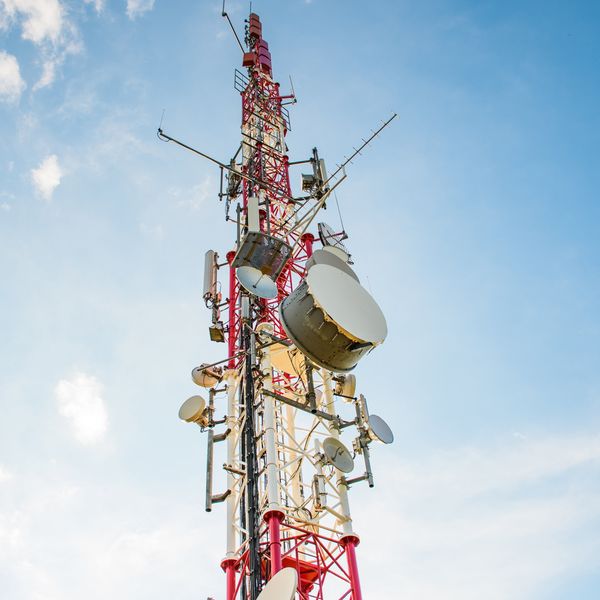A new systematic review of animal studies on wireless radiofrequency (RF) radiation and cancer commissioned by the World Health Organization (WHO) and published in Environment International concluded with “high certainty” that exposure to wireless RF radiation causes two types of cancer in animals. The "certainty" reflects how confident researchers are that the observed effects — such as the link between wireless RF radiation and cancer — are real and not due to chance, bias, or flaws in the study design.
Animal studies do not always directly translate to human health risks, but if animal studies show evidence of a substance causing cancer, the World Health Organization's International Agency for Research on Cancer (IARC) and the U.S. Agency for Toxic Substances and Disease Registry (ATSDR) generally consider it a potential human carcinogen.
In short:
- The review found high-certainty evidence linking wireless RF radiation exposure to two types of malignant tumors in animals: gliomas of the brain and schwannomas of the heart.
- The review also found moderate-certainty evidence for an increased risk of rare tumors in the adrenal gland and liver.
- The review found moderate certainty of evidence for lymphomas; although some experiments suggested a link, the findings were not uniform enough to conclude with high certainty.
Key Quote:
“The findings of this systematic review indicate that there is evidence that RF EMF exposure increases the incidence of cancer in experimental animals with the CoE (certainty of evidence) being strongest for malignant heart schwannomas and gliomas.”
Experts Respond:
Some scientists are urging immediate policy action to protect public health and the environment, warning that delays could have serious consequences. The International Commission on the Biological Effects of Electromagnetic Fields (ICBE-EMF), an international consortium of scientists, doctors, and researchers stated, “Given this high level of certainty, government policymakers worldwide should immediately move to revise their RF radiation exposure limits to protect public health and the environment.”
Why This Matters:
In 2011, the IARC classified wireless RF radiation as a Group 2B “possible” human carcinogen, citing limited evidence from animal studies at the time. Since then, large-scale studies by the National Toxicology Program and the Ramazzini Institute reported that RF radiation exposure caused cancer in animals. Several scientists stated this animal evidence adds critical support for the IARC to re-evaluate and strengthen its classification of the strength of scientific evidence on wireless radiation and cancer.
What This Means for Humans
The types of tumors observed in the animal studies (gliomas and schwannomas) are the same types of tumors that have been reported in human studies.
- Gliomas of the brain are rare tumors that are cancerous in humans about 80% of the time. Among these, glioblastomas — the most aggressive form — have been linked to long-term cell phone use in human epidemiological studies.
- Schwannomas are rare and typically benign in humans, but can cause serious health effects including hearing loss, balance issues, and pressure on the brain. Vestibular schwannomas, also known as acoustic neuromas, have also been linked to long-term cell phone use in human epidemiological studies.
A 2021 analysis of two large-scale animal studies on cell phone radiation that were highlighted in the WHO-commissioned review (the studies by the National Toxicology Program and the Ramazzini Institute) concluded that their cancer findings support lowering current federal safety limits by several hundred-fold to adequately protect public health. Numerous other medical and scientific organizations also recommend reducing RF radiation exposure to protect human health and the environment.
“We cannot afford to ignore this study. Animal studies predict the future, whereas human studies examine the past,” said Theodora Scarato MSW, Director of the Wireless and EMF Program at Environmental Health Sciences. “Scientific evidence must guide policy.”
More resources:
- ICBE-EMF Press Release: New WHO-Funded Study Reports High Certainty Of The Evidence Linking Cell Phone Radiation To Cancer In Animals
- Safety Tips for Reducing Cell Phone and Wireless Radiation Exposure
- Doctors and Scientists Recommendations on Cell Phone Radiation
Related EHN coverage:
- Cell phone use linked to an increased risk of prostate cancer
- Electromagnetic radiation from power lines linked to increased leukemia risk in mice
- Prescription for prevention: Cutting pollution and cancer risk in Pittsburgh ›
- Plastics cause wide-ranging health issues from cancer to birth defects, landmark study finds ›
- Cell phone radiation impacts hormone levels and ovary development in rats - EHN ›
- Cell phone radiation altered brain development in rodents, study finds - EHN ›
























